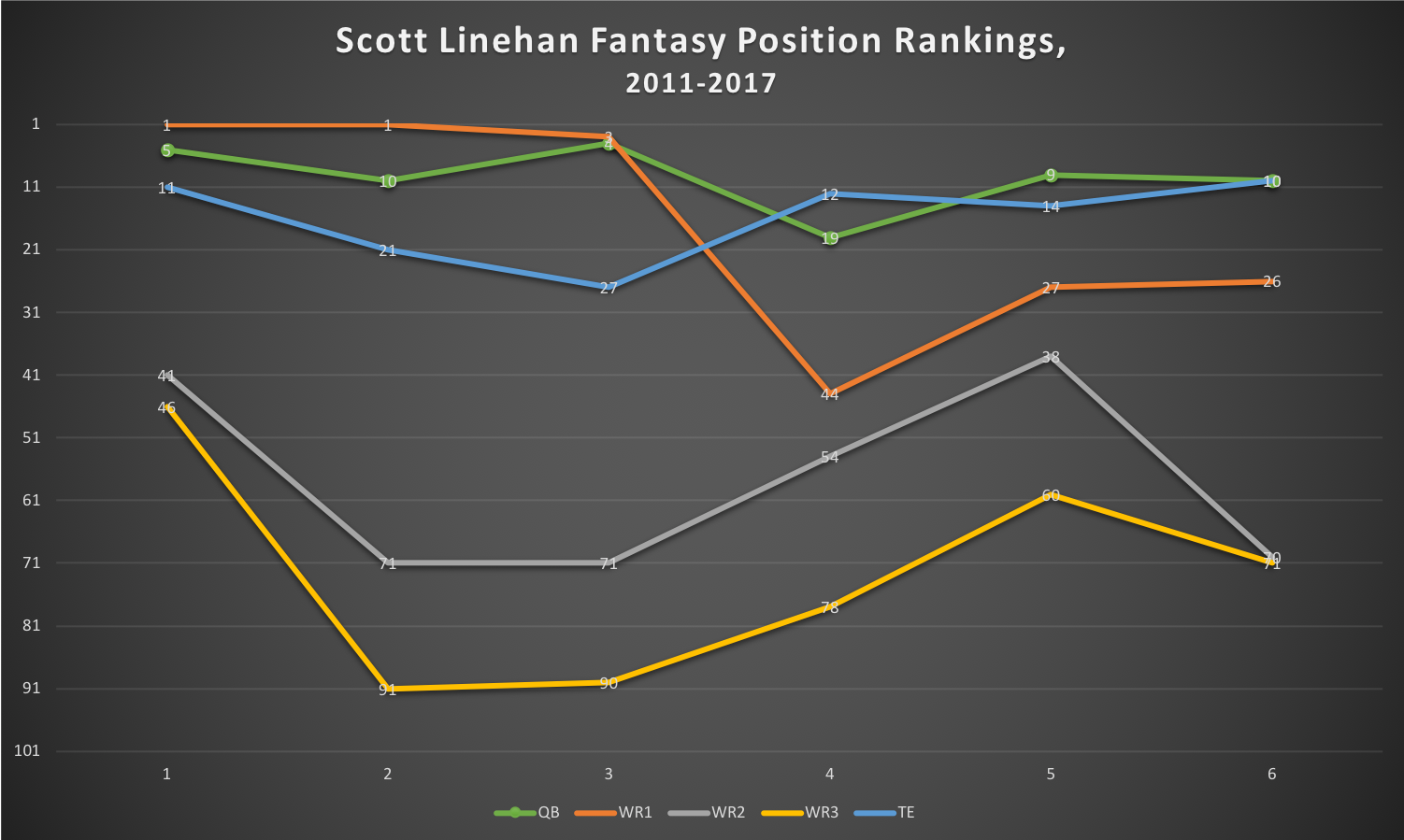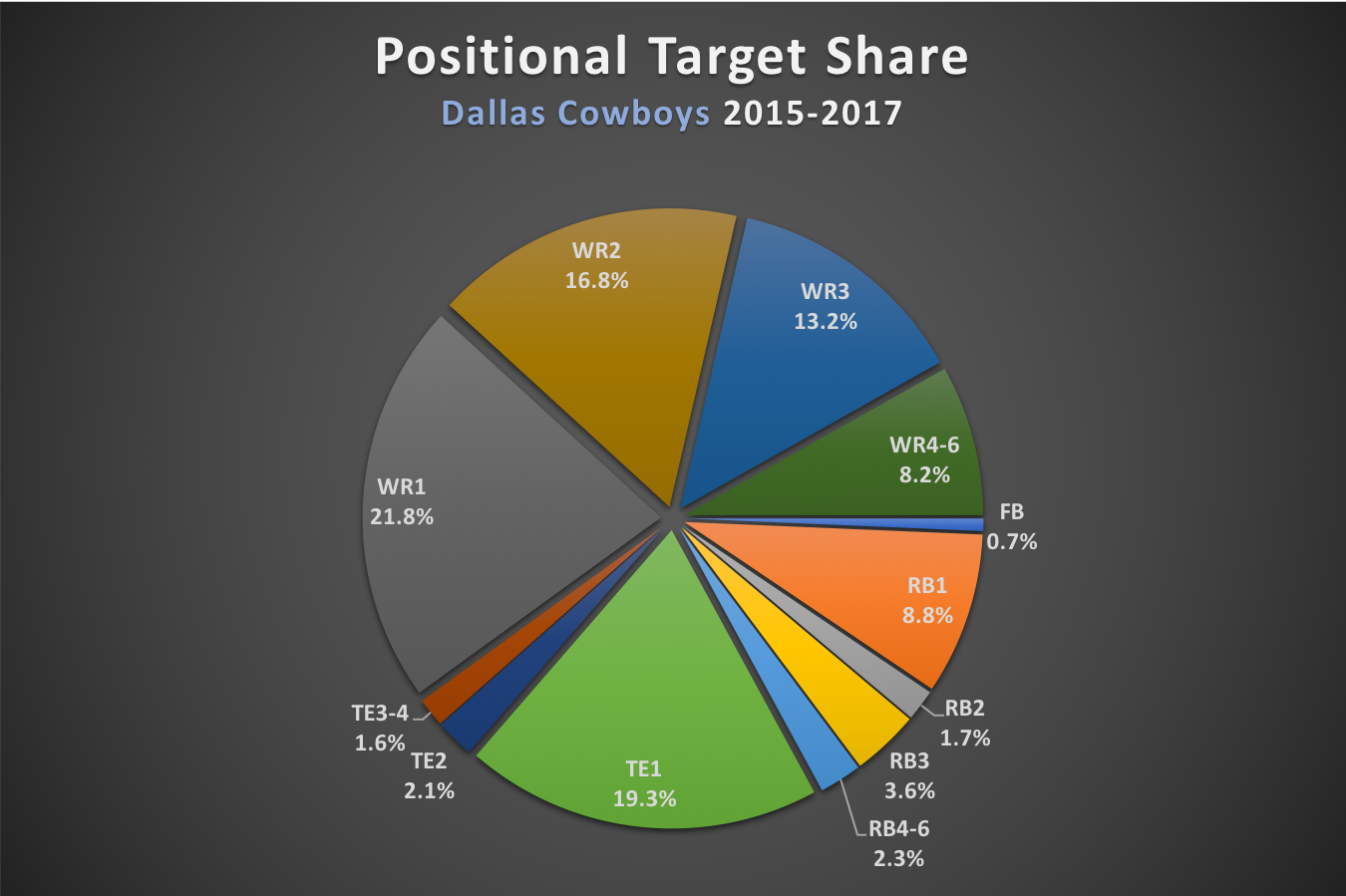Fantasy Football: The Dallas Cowboys’ Passing Game Isn't Worth the Risk

Fear -- while it never feels good -- serves an important evolutionary purpose. We developed this emotion as a way to self-preserve, as a way to suss out the difference between a safe situation and a dangerous one. Fear is our built-in mental seatbelt so that we don’t whip ourselves into the windshield of life by making reckless decision after reckless decision.
But when it comes to playing fantasy football, fear can actually be a hindrance to good analytical process (shout-out to C.D. Carter, who explains this beautifully in his book). By making a fantasy football decision that seeks to avoid risk instead of chasing value and embracing it, we actually don’t make the most of the opportunities available to us.
Despite quarterback Dak Prescott's down 2017 season -- notwithstanding the ball-hog usage of running back Ezekiel Elliott -- and the lackluster receiving corps headed by perpetually banged-up wide receiver Allen Hurns, should we still target the Dallas Cowboys' passing game in our fantasy football drafts?
The Offense
The chart below shows the annual PPR fantasy rankings of offensive coordinator Scott Linehan’s quarterbacks, top three wide receivers, and tight end over the last six years in which he has coordinated the entire offense (in 2014, Linehan was the passing game coordinator only), per FF Today.

There are a few trends we can take away from this. First and foremost, in five of the six years we sampled, Linehan’s passer ended up as the 10th-best fantasy option or better at the position. Despite Prescott averaging a meager 475 passing attempts per season through two years, his hyper-efficiency with completions, touchdowns, and interceptions has kept his fantasy value in the startable tier of quarterback options.
As for the receiving options, Linehan’s top tight end has been a top-16 fantasy option (high-end fantasy TE2 or better) in four of the six seasons. That said, save for three years of superstar Calvin Johnson, Linehan’s top wide receiver has struggled to break into even fantasy WR2 status. During his Dallas tenure, Dez Bryant's average fantasy ranking was 32nd among wide receivers.
Linehan fits “his offense” to the quarterback he has available; he uses his talent how it’s best suited, rather than shaping players to fit a certain mold. What that means for us is that we have to drill down on the production profiles of players on the Cowboys’ roster to figure out where the fantasy value -- if any -- in the passing game lies.
The Talent
The best place to start is by looking at the high level: where do the targets in Linehan’s Cowboys offenses go?
The chart below shows the target share (target data courtesy of Pro Football Reference) for each position group on the Cowboys’ roster, broken down within the position by the player’s role in that group (i.e. running back with most attempts plus targets is RB1). How is the receiving load split?

The top Cowboys receiver over the last three years averaged 21.8 percent of the team’s targets, while the average top-20 fantasy wide receiver over that same timeframe has seen a 23.5 percent target share.
However, considering the fact that Prescott has averaged about 475 passes per season, there is little margin for error. This low volume means that the best Dallas wideout gets about 19 percent fewer opportunities than his would-be peers.
Hurns posted by far his best career catch rate in 2017, a 69.6 percent mark, but he did so by averaging just 9.8 Targeted Air Yards (per NFL.com’s Next Gen Stats, the average distance in the air the ball travels per target), a significant decrease from his 10.8 in 2016, when he had a career-low catch rate of 46.1 percent. This cap on Hurns’ effective yardage could make him a good fit, and therefore a prolific target, for Prescott's similarly low yards per attempt approach.
With the role itself capped and the passing offense’s volume dampened, though, the more likely outcome is what our models project: 612.1 yards and 2.71 touchdowns on just 77.1 targets, as just barely a top-60 fantasy receiver.
The Others
As for the other receivers, it’s possible for one of Terrance Williams, Cole Beasley, or Michael Gallup to rise up and leap into startable range this year (top-40 at the position), but it’s not likely. The average fantasy receiver who ranked between 21st and 40th over the last 3 years saw an 18.0 percent target share in offenses that, on average, threw the ball 15.0 percent more than the Cowboys.
The way a Dallas receiver could emerge to steal the show is through big-play dramatics -- deep passes or touchdowns. This should rule out Beasley, whose 7.2 Targeted Air Yards over the last two seasons is even lower than Hurns’.
Williams was used as a deep option early in his career, with 58 targets of 20 yards or more from 2013 to 2015 (per Pro Football Focus). All in all, he hasn’t been horrible, considering that his career catch rate on these kinds of targets is 39.5 percent, when the league average last year was 33.6 percent. His deep targets have gone way down over the last two years, however, as his catch rate on deep passes has plummeted. Despite Williams’ nearly-free cost in fantasy leagues, you may be burning the opportunity cost of a roster spot with him.
That leaves the rookie Gallup. It is worth noting that Gallup was 11th in yards per reception among the 76 college receivers with at least 60 catches in 2016, and 24th among 69 receivers in 2017 (per Sports Reference), so he has demonstrated both high-target and deep-ball skill sets that could lend him to a breakthrough season. Though his upside is tantalizing, we have no way to know what a reasonable outcome for him is (or where he truly is on the "official" depth chart).
The tight end position could be a legitimate fantasy value in this offense, if one were to separate himself from the pack. For practical purposes, Dallas’ top tight end has averaged just under 10 fewer targets per season than the average fantasy TE1 due to the low passing volume in the Dallas offense. The average target load of a top-15 fantasy tight end, however, comes in nearly even with the Cowboys’ position. This means that if one of Blake Jarwin, Geoff Swaim, Dalton Schultz, or even Rico Gathers seizes the production, they could be a solid high-floor option despite lacking elite fantasy pedigree.
The Risk
Really, the only fantasy player in the Cowboys' passing game that we can rely on is Dak Prescott. Linehan’s offense helps the quarterback best utilize his skills, and for Prescott that means accurate, quick passing and unleashing his rushing ability judiciously. That said, our models project Prescott as fantasy’s QB17 this year.
As for the others, none of the Cowboys’ receiving options truly have an open path to high fantasy potential, and there is no true dominating talent that will open a big lead over his peers. The Cowboys’ NFL success will come from their ability to spread the ball around to mitigate their receiving corps’ lacking talent, and the heavy division of a low number of pass attempts should severely dampen their passing game’s fantasy potential.
It’s never good to fear irrationally when it comes to playing fantasy football, but if it’s warranted, don’t ignore your instinct. With the 2018 Cowboys’ passing game, you can rest assured the risk is high and the reward is low.
















